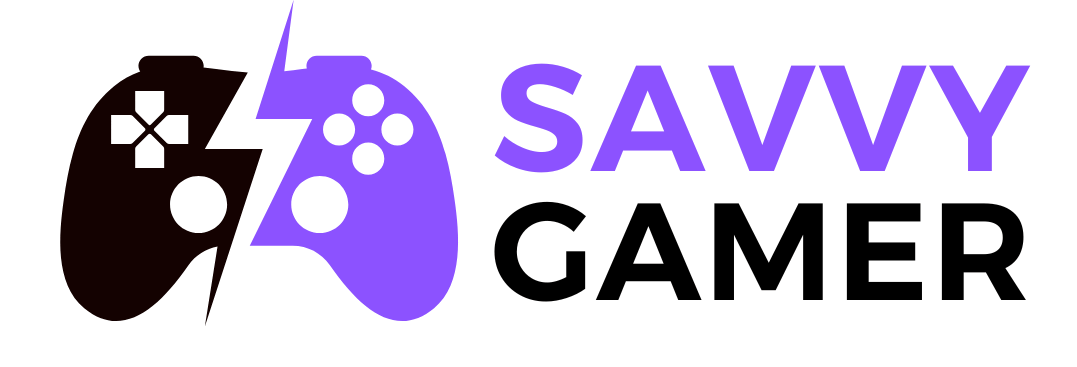Customization As A Mini-Game
Character customization can make or break your gaming experience. Some titles hand you two hairstyles, three skin tones, and call it a day, leaving you stuck with an avatar that looks like it wandered out of a discount bin. Others throw open the doors, giving you tools so creative that building your character becomes its own game. So, first, let’s jump into ten games that completely flop on customization.
 Mass Effect Legendary Edition - Character Customization (Femshep) by AFGuidesHD
Mass Effect Legendary Edition - Character Customization (Femshep) by AFGuidesHD
1. Dark Souls (2011)
Dark Souls technically offers a character creator, but calling it “customization” feels generous. The sliders can twist facial features into uncanny distortions, making most attempts look more cursed than heroic. Plus, hairstyles are limited, so players end up with near-identical avatars.
 Dark Souls Remastered Character Customization by Incandescence
Dark Souls Remastered Character Customization by Incandescence
2. Grand Theft Auto V (2013)
Grand Theft Auto V locks players into its main story with three fixed protagonists, removing any chance of personalization. On top of that, heavy monetization limits meaningful cosmetic freedom, which turns individuality into something players must pay for rather than create.
 Grand Theft Auto V Online - Character Creation by BarkingPalsy
Grand Theft Auto V Online - Character Creation by BarkingPalsy
3. Mass Effect (2007)
Few games spark as much nostalgia as Mass Effect, but character creation was never its strong suit. Commander Shepard’s customization often left players staring at faces that looked more plastic than heroic, with stiff features and oddly limited sliders compared to its RPG rivals. Even hairstyles felt repetitive.
4. Bloodborne (2015)
Bloodborne overwhelms players with an intricate slider system, yet the results hardly matter. Most characters look nearly identical, no matter the adjustments, and once covered in gothic armor or hoods, customization becomes invisible.
 BLOODBORNE - Character Customization (Male & Female) by TJ's Secret Stash
BLOODBORNE - Character Customization (Male & Female) by TJ's Secret Stash
5. Monster Hunter: World (2018)
Players of Monster Hunter: World quickly noticed a frustrating gap between character creation and gameplay. Faces designed in the editor looked mismatched in cutscenes, and limited hairstyles with few body types made customization shallow.
6. Pokémon Sword And Shield (2019)
Pokémon Sword and Shield offered one of the most bare-bones customization systems in a major RPG. Players could only pick gender, hair, skin tone, and a small set of clothes, with no body sliders or facial adjustments. Clothing shops expanded their choices slightly, but hairstyles remained extremely limited.
 All Outfits & Costumes Unlocked Showcase - Pokemon Sword & Shield Customization by MELOO
All Outfits & Costumes Unlocked Showcase - Pokemon Sword & Shield Customization by MELOO
7. Call Of Duty: Modern Warfare (2019)
Instead of letting players shape their own identities, Call of Duty: Modern Warfare stuck firmly to fixed characters. The campaign forced you into set protagonists, while multiplayer only offered predefined operators. Moreover, unlockable cosmetics—mostly repetitive camo skins—felt shallow.
 Call Of Duty Modern Warfare - Character Customization Speculations by BuffNerdGaming
Call Of Duty Modern Warfare - Character Customization Speculations by BuffNerdGaming
8. Super Mario Odyssey (2017)
Super Mario Odyssey made it clear that Mario would always be Mario, no matter what. There were no options for body or facial edits, only a costume system that changed outfits without altering identity. The lack of meaningful personalization highlighted Nintendo’s commitment to character branding over giving players creative freedom.
 Super Mario Odyssey - All Outfits (DLC Included) by Blitzwinger
Super Mario Odyssey - All Outfits (DLC Included) by Blitzwinger
9. Halo 3 (2007)
Back in 2007, Halo 3 gave players only the illusion of individuality. The campaign locked everyone into Master Chief, while multiplayer offered little beyond armor pieces and helmets earned through achievements. With no body types or facial features, players had to rely solely on color schemes for identity.
 Halo: The Master Chief Collection CUSTOMIZATION by Greenskull
Halo: The Master Chief Collection CUSTOMIZATION by Greenskull
10. Xenoblade Chronicles X (2015)
Xenoblade Chronicles X gave players plenty of sliders at first glance, suggesting a deep customization system. Once in-game, though, faces appeared stiff and lifeless, undoing much of that effort. Hairstyles and cultural representation were sparse, and even clothing remained tied to class and progression.
 Xenoblade Chronicles X - Menu tour by Linkums (WhatTheyCallGames)
Xenoblade Chronicles X - Menu tour by Linkums (WhatTheyCallGames)
Now, here are ten games that absolutely nail it with innovative customization options.
1. Dragon’s Dogma: Dark Arisen (2013)
In Dragon’s Dogma: Dark Arisen, customization goes far beyond adjusting a hairstyle or outfit. Players could tinker with detailed sliders for facial features, body build, and voice. The innovation didn’t stop there—the pawn system introduced AI companions that players created themselves.
 Dragon's Dogma: Dark Arisen! Character Creation Guide. PS4 Xbox 1 PC by LemonEatingKow
Dragon's Dogma: Dark Arisen! Character Creation Guide. PS4 Xbox 1 PC by LemonEatingKow
2. SoulCalibur VI (2018)
When SoulCalibur VI arrived, players were handed one of the most flexible customization toolkits ever seen in a fighting game. Its Create-a-Soul system opened doors to hundreds of interchangeable parts. Costumes gained extra flair through layers of colors and emblems.
 SoulCalibur VI Custom Character Community Edits 4K - Day 17 by Rob Cram
SoulCalibur VI Custom Character Community Edits 4K - Day 17 by Rob Cram
3. Spore (2008)
Creativity reached new heights in Spore, where the drag-and-drop creature creator turned wild ideas into living beings. Every limb, wing, or tail was shaped how procedural animation taught them to move—be it waddling or swimming.
 Spore Creature Creator Tutorial 1 by Spore
Spore Creature Creator Tutorial 1 by Spore
4. Phantasy Star Online 2 (2012)
For fans of personalization, Phantasy Star Online 2 delivered a dream toolkit. Its anime-inspired sliders shaped everything from subtle facial angles to full body proportions. Extra layers like wings or mecha parts pushed creativity even further.
 PHANTASY STAR ONLINE 2 | Character Creation, Races & Classes by Cresyl Snapdragon
PHANTASY STAR ONLINE 2 | Character Creation, Races & Classes by Cresyl Snapdragon
5. Black & White (2001)
In Black & White (2001), character customization lived in the body of a creature that literally morphed with your choices. Every action mattered. Feeding, training, or punishing it reshaped its size and demeanor, making your companion a reflection of your morality.
 Black & White 1 HD God Game & 2001 Gameplay by GamerZakh
Black & White 1 HD God Game & 2001 Gameplay by GamerZakh
6. City Of Heroes (2004)
Stepping into City of Heroes (2004) felt like leaping straight into the panels of a comic. The game handed players the tools to bring their dream hero to life, thanks to a costume editor that rivaled anything seen before. Moreover, body shape and powersets could all be tailored into a singular creation.
 City of Heroes is back E01 Character Creation - First Missions - Blaster Build by TBF Gaming
City of Heroes is back E01 Character Creation - First Missions - Blaster Build by TBF Gaming
7. Tony Hawk’s Underground (2003)
Sports titles rarely pushed boundaries in the early 2000s, but Tony Hawk’s Underground rewrote the rules. It lets players design skaters from head to toe. Voice and animations could be personalized, and, incredibly, emailing a photo to the studio meant your own face could appear in-game.
 Tony Hawk Underground PC - CUSTOMIZE MY CHARACTER w/ KingKB24 by GamersBrawlNetwork
Tony Hawk Underground PC - CUSTOMIZE MY CHARACTER w/ KingKB24 by GamersBrawlNetwork
8. The Sims 3 (2009)
The Create-a-Style tool in The Sims 3 changed everything. Suddenly, players could recolor clothing, hair, and furniture with infinite patterns and shades. Add in powerful sliders for shaping faces and bodies, plus customizable personality traits, and each Sim felt uniquely alive.
 The Sims 3: Character Creation (HD) by Twotorial
The Sims 3: Character Creation (HD) by Twotorial
9. Saints Row 2 (2008)
While GTA played it straight, Saints Row 2 (2008) went wild with creativity. Its body and face editor allowed sliders for muscle, build, and voice pitch, giving players near-total control. Clothing could be layered for mix-and-match flair, while custom taunts and animations injected personality.
 Saints Row 2 Customization by Steve O
Saints Row 2 Customization by Steve O
10. WWE SmackDown Vs. Raw 2006 (2005)
As one of the most advanced customization systems of its era, WWE SmackDown vs. Raw 2006 (2005) raised the bar. Its Create-a-Wrestler tools let players sculpt physiques, layer tattoos, and add scars. Pair that with custom entrances full of music and pyro, and the results became iconic.
 WWE Smackdown VS Raw 2006 All Sample Models by Jourdan Sockey
WWE Smackdown VS Raw 2006 All Sample Models by Jourdan Sockey









